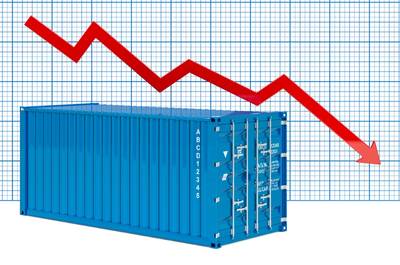Container Carriers Brace for a 'Stormy 2023' says Xeneta
January proved to be a dramatic month for long-term ocean freight rates, with the latest data from the Xeneta Shipping Index (XSI) showing the largest ever month-on-month declines. According to the XSI, average long-term contracted rates dropped by 13.3% in January, the fifth month in a row of falling prices on the index. Xeneta warns there is little sign of change ahead in what looks set to be a challenging year for carriers.
“Global demand has fallen away, congestion has eased, equipment is available, and the macro-economic and geopolitical situations are, to say the least, complex,” said Xeneta CEO Patrik Berglund. “As a result of those market fundamentals, spot prices have collapsed, spiralling downwards since late summer 2022. However, the carriers have managed to protect long-term rates from the worst impacts, until now.”
“With the dawn of 2023 many of the contracts negotiated last year have expired. Shippers, well aware of market dynamics turning in their favor, have reacted, pushing carriers for major rates reductions. What we’re seeing now is the effect of that, as new contracts enter validity. And, for the carriers, worse is set to come.”
Berglund notes that May last year saw the XSI’s largest monthly increase in a ‘super-hot’ market, with a climb of 30.1%. US import rates soared a staggering 65%. With contracts negotiated then set to expire at the end of April, upcoming falls could again rewrite the record books.
January’s largest fall was recorded on the Far East export subindex, with this major fronthaul corridor losing 18.1% of its value (41% up year-on-year). The backhaul proved more resilient, posting a 3.2% fall on the import benchmark – although this is still the sub-index with the smallest year-on-year increase, up 25.7%.
In Europe, the import benchmark saw a 9.6% drop, with Xeneta notes, some even larger declines associated with the trade from the Far East. The average valid long-term rate from the Far East to North Europe fell by 17%, with those from the Far East to the Mediterranean slipping by 15%. However, despite these sharp falls the previous strength of the market means rates remain 40.9% up year-on-year. The XSI for exports also sits strong, despite a 5.2% fall this month, up a commanding 83% against January 2022.
The story is similar in the U.S. across January, with the import subindex declining 15.8% from December. The export benchmark performed better in the soft market, with “only” a 1.3% month-on-month drop.














